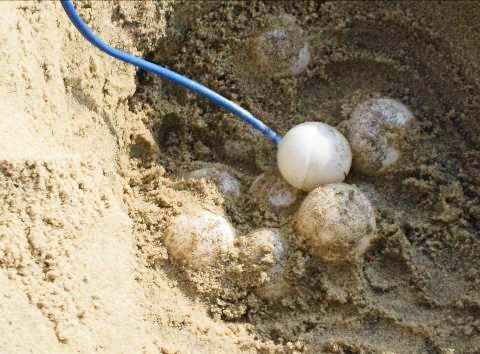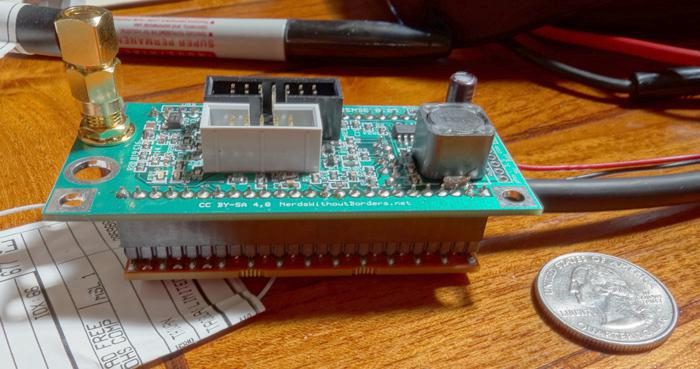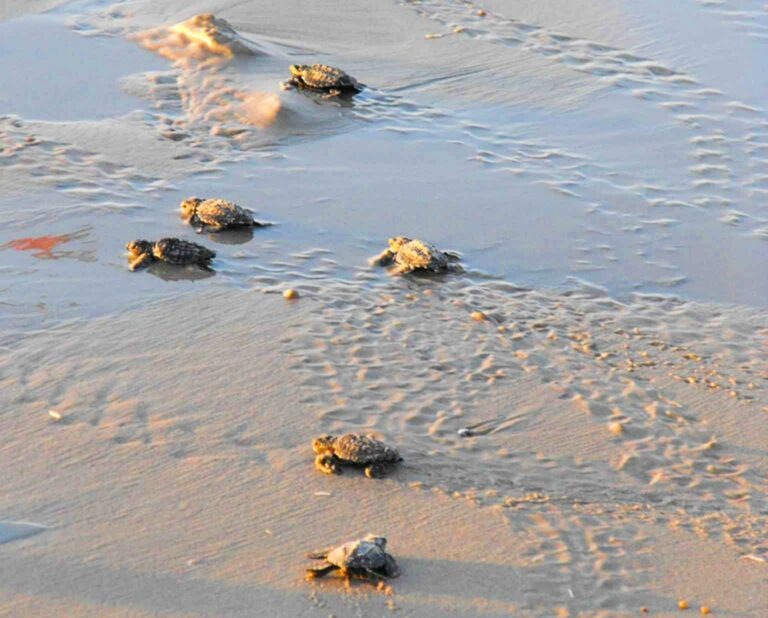A US team have developed a bright idea that could spare the lives of countless sea turtles that would otherwise never make it to maturity.
Developmental neuroscientist Erin Clabough, a University of Virginia psychology professor, happened to see a turtle nest roped off by the National Park Service on a beach on Hatteras Island, North Carolina. She mentioned to a passer-by that it would help to know exactly when the turtles would hatch – and he turned out to be Eric Kaplan, founder of Hatteras Island Ocean Centre and already engaged in trying to solve that problem.
Female turtles come ashore a few times each summer to lay their eggs. Buried under sand, they incubate for several weeks before the hatchlings emerge, usually as a massive sibling group, and head towards the sea.

All six sea-turtle species found in the USA are federally protected, but to reach the water the hatchlings must evade beach debris and predatory birds and crabs, and are easily disoriented by light pollution from habitations. Humans can safeguard the turtles’ passage only if they know when they will emerge – and predicting that accurately has nevr been easy.
Guesses are based on time elapsed since a nest was laid, with volunteers having to be available to monitor that nest during time-windows that could last a fortnight. Adding to the difficulty is that turtles are thought to use temperature cues to time their emergence under cover of night.
Clabough and Kaplan joined forces with retired engineers David Hermeyer and Samuel Wantman, inventor Thomas Zimmerman and veterinary student Joshua Chamberlin to come up with what they describe as a “novel, inexpensive way to monitor turtle nest activity remotely”.
Their TurtleSense monitor consists of an accelerometer, used to measures vibrations, connected to a microprocessor on a tiny circuit-board and embedded in a plastic ball the size of a turtle egg. Placed beneath the upper eggs in a nest, the sensor detects any motion or vibration activity that would indicate emergence.

The monitors were tested during the 2013-18 nesting seasons near the northernmost point of the eastern US coast where loggerheads lay their eggs, often on busy beaches. They were buried in 74 nests the morning after the eggs were laid, with 4m cables connecting them to a small communication tower. This transmitted motion data to mobile phone towers so that the team could monitor nest activity remotely.

“Our research indicates that vibrations or motion may play an important role in sea-turtle sibling communication and the timing of emergence, even if we don‘’’t completely understand how it happens,” says Clabough. “When the temperature is right and motion activity ceases, we believe this final quieting-down could signal to the baby turtles that all their siblings have hatched and it is time to leave the nest.”
TurtleSense testing suggests that turtles hatch in waves, quieting and then moving together, seemingly in sync. The data obtained has made it possible to predict when a nestful of baby turtles will stage their escape bid.
“Once hatching begins, we estimate hatchlings will emerge from the nest an average of 3.7 days later,” says Clabough. “Once hatching ends, we can revise this prediction date, narrowing the window.”
Turtles in deep nests typically emerge two nights after hatching is complete, though in shallower nests they can emerge within one night. The system detects infertile nests in which hatching activity is absent, allowing observers to focus elsewhere, and can help in timing protective measures such as turning off lights near the water, says Claybough.
Instructions for making sensors and communication towers are open source and available online at Nerds Without Borders, while the developers’ study has just been published on Plos One.
Also on Divernet: The Turtle That Holds Up The World, Turtle Navigation ‘Relatively Crude’, Life Looks Up For Endangered Turtles, Turtles Of Raja Ampat

